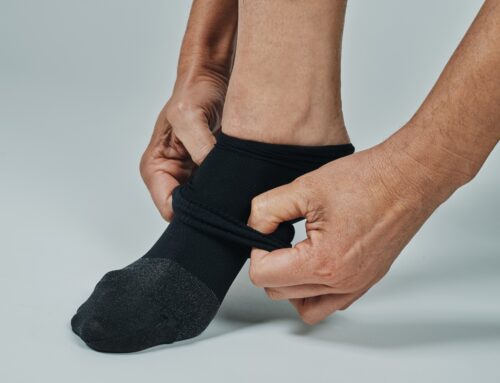Repetitive Strain Injury (RSI) refers to a condition caused by repetitive movements or overuse of certain muscles, tendons, and joints. It commonly affects areas like the hands, wrists, elbows, and shoulders. Everyday activities, whether it’s typing, working on an assembly line, or even recreational hobbies, can lead to RSI when done for prolonged periods without breaks or proper ergonomics.
If left untreated, RSI can worsen over time, potentially leading to chronic pain and limited mobility. That’s why early management is critical—it helps prevent long-term damage and allows for a quicker recovery.
With the right strategies, including rest, ergonomic adjustments, and targeted therapies, RSI can be effectively managed, enabling individuals to maintain their daily routines without discomfort
What Is Repetitive Strain Injury?
Repetitive Strain Injury (RSI) is a condition that occurs when muscles, tendons, or nerves are overused or subjected to repetitive movements over an extended period of time. This overuse leads to inflammation, pain, and discomfort, especially in areas that experience continuous strain. RSI is often linked to activities that involve repetitive tasks, such as typing on a keyboard, using a mouse, working with tools, or playing musical instruments.
RSI can affect various parts of the body, but it most commonly impacts the wrists, elbows, shoulders, neck, and hands. People who engage in repetitive tasks without sufficient breaks or proper ergonomics are particularly at risk.
If left unaddressed, RSI can lead to reduced mobility and chronic pain, making it essential to identify and manage the condition early.
Common Symptoms of Repetitive Strain Injury
Repetitive Strain Injury (RSI) often develops gradually, and recognizing the early symptoms is important for preventing further damage.
Early Warning Signs
In the initial stages of RSI, symptoms tend to be mild but persistent. The first noticeable sign is typically pain or tenderness in the muscles, tendons, or joints of the affected area. This discomfort usually intensifies with continued use of the affected muscles. For example, someone who spends hours typing or using a mouse may experience soreness in their wrists or hands.
Other early indicators include:
- A tingling sensation or numbness, particularly in the fingers or hands, is a common sign of nerve involvement. This is often due to compressed nerves caused by repetitive movements.
- Some people may experience slight swelling or a feeling of tightness in the affected area, often making it feel stiff or uncomfortable.
- This can occur in the overworked muscles, especially after long periods of repetitive motion without breaks.
These early symptoms are often easy to dismiss, but if ignored, they can progress into more serious problems over time.
Progressive Symptoms
If early signs of RSI go unaddressed, the condition may worsen, with more pronounced and debilitating symptoms developing. These progressive symptoms can make everyday tasks increasingly challenging and painful.
Common advanced symptoms of RSI include:
- As RSI progresses, the affected muscles and joints may become stiff, making it difficult to move them freely. This limitation can hinder simple activities such as gripping objects, typing, or even walking if the legs are involved.
- Over time, repetitive strain can lead to muscle fatigue and weakness in the affected area. You may notice that tasks requiring strength or dexterity, like lifting objects or typing, become much harder to perform.
- Unlike the intermittent pain in the early stages, progressive RSI can cause a constant dull ache or sharp, shooting pains that persist even during rest. This pain may extend from the affected area to nearby muscles or joints, further complicating recovery.
- More advanced RSI can cause noticeable swelling in the muscles, tendons, or joints, leading to increased discomfort and reduced mobility.
- In severe cases, RSI may result in a loss of strength or dexterity in the hands, making it hard to perform tasks like holding a pen, grasping objects, or using fine motor skills.
At this stage, early intervention and treatment become critical to prevent long-term damage, as ignoring these signs can lead to chronic pain or permanent loss of function in the affected areas.
How to Manage and Treat Repetitive Strain Injury
Rest and Avoid Repetitive Movements
The first and most important step in managing Repetitive Strain Injury (RSI) is to allow the affected area to rest. Reducing the strain on the muscles and joints by avoiding repetitive tasks gives the body time to heal. It’s essential to incorporate regular breaks into your routine, especially when performing tasks that involve repetitive motions, to prevent further damage and allow for recovery.
Ergonomic Adjustments
Making ergonomic adjustments to your workspace can significantly reduce the risk of RSI. Start by ensuring that your workstation is set up correctly, with proper chair height, keyboard position, and monitor alignment. Small changes, like using an ergonomic keyboard or mouse, can help reduce the strain on your wrists and hands. Ergonomic tools are designed to support the body’s natural posture, minimizing the stress on muscles and joints, which can be particularly beneficial for preventing and managing RSI.
Stretching and Strengthening Exercises
Incorporating gentle stretching and strengthening exercises into your routine can help alleviate tension and improve flexibility in areas affected by RSI. Stretches for the wrists, shoulders, and neck can be especially helpful for those suffering from RSI due to desk work or manual tasks. Strengthening exercises that target these muscle groups can also help support recovery and prevent future strain. Always start slowly and listen to your body to avoid overexertion.
Cold and Heat Therapy
Cold and heat therapy can be very effective in managing RSI symptoms. Applying ice packs to the affected area can reduce inflammation and numb pain, particularly in the early stages of the injury. As the injury progresses, applying heat can help relax tight muscles, improve circulation, and promote healing. Alternating between cold and heat therapies may also provide additional relief.
Use of Supportive Braces and Compression Wear
Wearing supportive braces or compression garments can offer stabilization for the affected area, helping to reduce strain and promote faster healing. Braces are particularly useful for conditions like carpal tunnel syndrome or tendinitis, where additional support is needed to prevent further irritation.
Preventing Future Repetitive Strain Injuries
Prevention is essential to avoid the recurrence of Repetitive Strain Injury (RSI) and maintain long-term well-being. By adopting healthy work habits and making small changes in daily routines, you can significantly reduce the risk of RSI. Here are a few strategies to help prevent future injuries:
- Take Frequent Breaks
One of the simplest yet most effective ways to prevent RSI is to take regular breaks throughout the day. Short, frequent pauses to rest and stretch can reduce muscle fatigue and give overworked areas time to recover. - Maintain Proper Posture
Good posture helps minimize unnecessary strain on muscles and joints. Whether sitting or standing, ensure your spine is aligned, and your shoulders are relaxed. Use ergonomic furniture and equipment to support natural body alignment. - Incorporate Movement into Daily Routines
Regular movement helps keep muscles flexible and prevents stiffness. Make it a habit to stretch or move every hour, especially if you’re doing repetitive tasks or sitting for extended periods. This can include simple stretches, standing up, or walking around to promote circulation and relieve muscle tension.
When to Seek Professional Help
While many cases of Repetitive Strain Injury (RSI) can be managed with rest, ergonomic adjustments, and home care, there are times when seeking professional help is essential. If symptoms persist or worsen despite self-care measures, it’s important to consult a healthcare provider for further evaluation and treatment.
Below are some key indicators that it may be time to seek medical attention for RSI:
- Persistent Pain
If pain continues even after resting the affected area and limiting repetitive activities, it could indicate a more serious issue that requires professional intervention. - Worsening Symptoms
If you notice that your symptoms are getting progressively worse, such as increased pain, reduced mobility, or more frequent numbness and tingling, it’s important to seek help before the condition worsens further. - Lack of Improvement After Rest and Self-Care
If you’ve tried resting, making ergonomic adjustments, and using home remedies like ice and heat therapy but haven’t seen any improvement, it’s time to consult a medical professional for a proper diagnosis and treatment plan.
A healthcare provider can assess your condition and recommend more advanced treatments, such as physical therapy, custom orthotics, or in severe cases, medical interventions. Early treatment can prevent long-term damage and improve recovery outcomes, so don’t hesitate to seek help when needed.
Take Control of Your Repetitive Strain Injury
Managing and preventing Repetitive Strain Injury (RSI) starts with recognizing the early signs and taking proactive steps to address them. By resting the affected area, making ergonomic adjustments, and incorporating regular movement and stretching into your routine, you can effectively manage the discomfort and avoid long-term complications. Preventing RSI recurrence involves adopting healthy work habits and paying attention to how your body responds to repetitive tasks.
Early intervention is crucial in minimizing the impact of RSI and ensuring a quicker recovery. Small lifestyle adjustments can make a significant difference in reducing strain on your muscles and joints. If you’re experiencing persistent pain or need additional support, don’t hesitate to seek professional help.
At Care-Med, we understand that each individual’s needs are unique. Our team offers personalized solutions, including custom braces, compression wear, and ergonomic tools to help you manage and prevent RSI. Contact us to learn more about how we can support your recovery and overall health.
Share This Story, Choose Your Platform!
Table of Contents
We specialize in orthotics, body braces, and compression wear tailored to your unique needs in Toronto. Reach out to us at info@caremed.care or call 416-782-5353 to book your fitting and consultation.
Experience the difference of customized solutions designed just for you.











